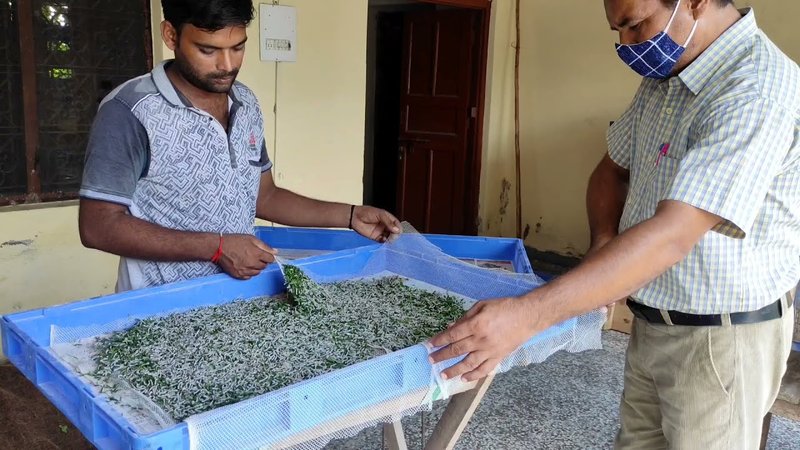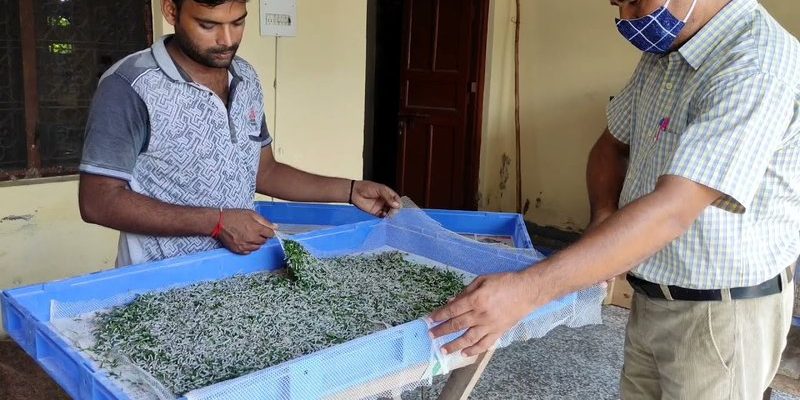
Imagine you’re preparing a fresh new home for silkworms just as you might set up a cozy apartment before moving in. It’s about creating a welcoming place that supports their growth and development. Silkworm trays, whether you’re using a simple plastic tub or a more elaborate enclosure, need proper care to keep those little critters happy and thriving. Let’s dive into how to clean silkworm trays and enclosures step by step.
Why Cleaning Silkworm Trays Matters
Cleaning your silkworm trays isn’t just about aesthetics; it has serious health implications. Silkworms are particularly susceptible to infections and disease, often arising from unsanitary conditions. Think of the trays as their little living room; if it’s dirty, your silkworms will likely feel stressed and may not grow as they should.
Beyond preventing disease, a clean tray helps with proper air circulation and humidity levels. When trays are cluttered with old food remains or waste, it can lead to mold and create an unhealthy environment. For instance, if you find old mulberry leaves or frass (that’s the technical term for silkworm droppings) piling up, you’re also inviting pests that can harm your silkworms. So, keeping the trays clean is key to fostering a healthy environment.
Gather Your Supplies
Before you get your cleaning groove on, you’ll need a few supplies. Here’s a quick checklist to make sure you’re ready to tackle the task:
- Soft sponge or cloth: This will help you scrub without damaging the tray.
- Warm, soapy water: Use a gentle dish soap; harsh chemicals can harm silkworms.
- Rubbing alcohol: A diluted solution can help disinfect surfaces.
- Scrubbing brush: This is great for stubborn spots.
- Bucket or basin: For soaking the trays if needed.
- Gloves: To protect your hands, especially if you’re sensitive to soap.
Having these supplies on hand makes the process smoother. It’s like prepping your ingredients before cooking—you want everything ready to whip up a great meal, or in this case, a clean, healthy environment for your silkworms.
Step-by-Step Cleaning Process
Now that you have your supplies, let’s get down to the nitty-gritty of cleaning your silkworm trays and enclosures. This process is pretty straightforward, but you’ll want to follow each step carefully to avoid missing important bits.
Step 1: Remove Silkworms and Debris
Start by gently removing any silkworms from the tray. You might want to use a soft brush to sweep them into a temporary holding container. Be careful not to hurt them! After relocating the silkworms, dump out any leftover food and waste. You can use a handheld vacuum or a small spoon to scoop out the frass and leftover leaves.
Step 2: Soak the Trays
Fill a bucket or basin with warm, soapy water, and submerge the trays for a few minutes. Soaking loosens any stubborn debris stuck to the surfaces, making your job a lot easier. While they’re soaking, this can be a good time to check for any signs of wear or damage.
Step 3: Scrub and Rinse
After soaking, use your sponge or cloth to carefully scrub the trays. Don’t forget to get into the corners and edges where grime likes to hide. Rinse thoroughly to ensure no soap residue remains—this is important since chemicals can harm your silkworms.
Step 4: Disinfect
Once rinsed, it’s time to disinfect. Spray a diluted solution of rubbing alcohol onto the surfaces. Let it sit for a few minutes before rinsing again with clean water. This extra step is vital to ensure that any lingering bacteria are taken care of.
Step 5: Dry Thoroughly
After cleaning, make sure to dry the trays completely. You can air dry them or use a clean towel. A damp environment can encourage mold growth, which is not what you want for your silkworms.
Maintaining Cleanliness Between Cleanings
Now that your trays are spick and span, how do you keep them that way? Here are some tips to maintain cleanliness until the next deep clean:
- Daily Check-ins: Spend a few minutes each day inspecting the trays. Remove any waste or uneaten food right away.
- Regular Food Changes: Always replace old leaves with fresh ones. This can prevent any build-up of mold or pests.
- Monitor Humidity: Keeping an eye on humidity levels can help control the growth of undesirable microorganisms.
Think of these maintenance steps like daily tidying up in your home—you don’t wait until it gets messy before you start cleaning.
Common Mistakes to Avoid
Cleaning can be straightforward, but there are a few common mistakes that can trip you up. Here’s what to watch out for:
- Using Harsh Chemicals: Avoid bleach and strong cleaners. They can leave residues that are harmful to your silkworms.
- Neglecting the Corners: Tiny bits of food can easily hide in the corners. Neglecting these spots can foster bacteria.
- Not Rinsing Enough: Always ensure you rinse away any soap or cleaning solution completely. Your silkworms will thank you!
These simple pitfalls can create more complications down the road. Keeping them in mind will help you maintain a healthier environment for your silkworms.
Cleaning silkworm trays and enclosures may seem like a chore, but it’s essential for their health and your peace of mind. By understanding why cleaning matters and following a simple, step-by-step approach, you can create a thriving environment for your silkworms.
With regular maintenance and proper cleaning techniques, you’ll ensure that your silkworms remain happy and healthy. So grab your supplies, roll up your sleeves, and give those trays a good scrub. Remember, a clean home is a happy home—especially for your little silk-producing friends!

